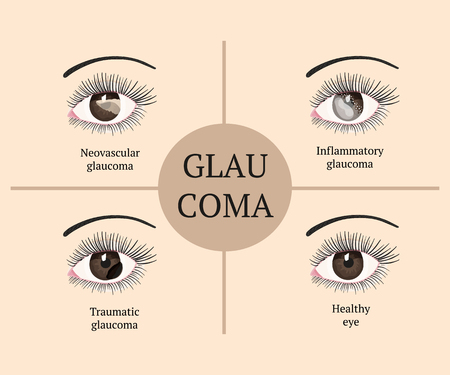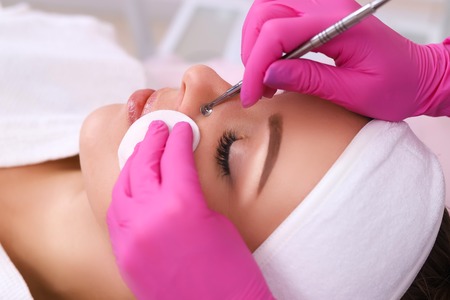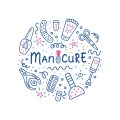What Are Lash Extensions?
If you’ve ever scrolled through Instagram or checked out the latest beauty trends in the U.S., you’ve probably noticed a lot of women—and some guys too—sporting those long, thick, dramatic eyelashes. That’s all thanks to lash extensions. But what exactly are they? Basically, lash extensions are semi-permanent fibers—usually made from synthetic materials, silk, or mink—that a trained technician individually glues onto your natural lashes using a special adhesive. The process is pretty meticulous and can take anywhere from one to two hours, depending on how full and bold you want your lashes to look.
Lash extensions have blown up in popularity across America because they offer an instant confidence boost and eliminate the need for daily mascara or strip lashes. For people looking for that “just rolled out of bed and already put together” vibe, extensions are a total game-changer. Whether it’s for convenience, aesthetics, or just wanting to feel good about yourself when you catch your reflection, it’s easy to see why so many people are giving lash extensions a try. But with their rise in popularity comes the big question: Are lash extensions actually safe? That’s what this article is here to break down.
Common Risks and Side Effects
Getting lash extensions can be a game-changer for your daily routine, but it’s not without its risks. In the U.S., where beauty trends catch on fast, it’s important to be aware of both the obvious and the less-talked-about health concerns that come with lash extensions. The most common issues fall into a few categories: allergic reactions, irritation, infections, and some complications you might not see coming. Let’s break these down so you know what to watch out for before booking your next appointment.
| Risk/Side Effect | Description | How Common? | Typical Triggers |
|---|---|---|---|
| Allergic Reactions | Redness, swelling, itching around the eyes due to sensitivity to glue or materials used | Occasional | Adhesive ingredients (like formaldehyde), synthetic lash fibers |
| Irritation | Sensation of burning, discomfort, or watery eyes during or after application | Common | Poor ventilation, improper technique, getting glue in the eye |
| Infections | Bacterial or fungal growth due to unsanitary tools or environments | Less common but serious | Dirty tools, unwashed hands, contaminated products |
| Lash Damage/Loss | Your natural lashes may become weak or fall out from the extra weight or poor application | Moderately common if done repeatedly or incorrectly | Heavy extensions, lack of aftercare, aggressive removal methods |
| Lesser-Known Complications | Dry eye syndrome, blepharitis (eyelid inflammation), corneal abrasions from poking lashes or glue mishaps | Rare but possible | Poor technique, incorrect placement, underlying eye conditions made worse by extensions |
If you’re someone who wears contacts or has sensitive skin around your eyes like me, you’ll want to pay extra attention here. Sometimes the side effects aren’t immediate; it could take hours or even days for redness or irritation to show up. In my experience—and from talking to other guys who’ve tried it for special occasions—the key is making sure your technician knows their stuff and uses quality products. The bottom line? Lash extensions are generally safe if you’re careful about where you go and how you care for them after. But knowing these potential risks means you can make a more informed decision and avoid turning your beauty upgrade into an unexpected ER visit.

3. Factors That Influence Safety
When it comes to lash extensions, safety really boils down to three key factors: the skill of your technician, how clean the salon is, and the quality of the products they use. First off, let’s talk about the technician. A certified and experienced lash artist knows exactly how to apply extensions without damaging your natural lashes or irritating your eyes. I can’t stress enough how much this matters—someone who’s just learning might use too much glue or place the extensions too close to your eyelid, which can lead to discomfort or even infections.
Next up is salon hygiene. This isn’t just about sweeping up fallen lashes on the floor—it’s about whether tools are properly sanitized between clients, if disposable items are used where needed, and whether hand washing or gloves are standard practice. In the U.S., most reputable salons follow state board regulations, but it never hurts to ask when you walk in. Trust me, you don’t want someone coming at your eyes with tweezers that haven’t been disinfected.
Finally, product quality is a game changer. Cheap adhesives can contain harsh chemicals like formaldehyde, which not only smell terrible but can cause allergic reactions or worse. High-quality products tend to be gentler and specifically formulated for sensitive areas like your eyelids. If you have a history of allergies, always ask what brands and ingredients are being used before you settle in for your appointment. The bottom line? Don’t be shy about asking questions—your eyes will thank you for it.
4. How to Choose a Reputable Lash Artist
Making sure your lash extensions are safe starts with choosing the right lash artist and salon. In the U.S., there are clear standards and regulations you can use to protect yourself and get the best results. Here’s how I go about it—and what you should look for if you want to avoid any unnecessary risks.
Check for Certifications and Licensing
The first thing I do is check whether the lash technician is certified and the salon is licensed. In most states, lash artists need to hold a cosmetology or esthetician license, which means they’ve undergone training in sanitation and safety. Don’t be afraid to ask your technician to show their credentials or proof of training—it’s standard practice here in America.
Read Reviews and Ask Around
Nothing beats word-of-mouth, but online reviews are the next best thing. I always scope out salons on Google, Yelp, or social media before booking an appointment. Look for consistent positive feedback about cleanliness, professionalism, and client satisfaction. If you see repeated complaints about hygiene or allergic reactions, that’s a red flag.
What to Look for in a Safe, Licensed Salon
Beyond certifications and good reviews, here are key things I keep an eye out for whenever I walk into a new salon:
| Checklist Item | Why It Matters |
|---|---|
| Clean Workstations | Reduces risk of infection; tools should be sanitized between clients. |
| Proper Ventilation | Helps minimize exposure to glue fumes that can irritate eyes. |
| Patch Test Offered | A good tech will test glue on your skin first to rule out allergies. |
| Clear Aftercare Instructions | You should leave knowing how to care for your lashes safely. |
| No “Too Good to Be True” Deals | Bargain prices often mean shortcuts—don’t risk your eye health. |
Questions to Ask Before Booking
- Are you licensed in this state?
- What kind of glue do you use? Is it formaldehyde-free?
- How do you sterilize your tools?
- Can I see examples of your previous work?
- What should I do if I have a reaction?
If a salon can confidently answer these questions and ticks all the boxes above, you’re probably in good hands. Remember—your safety comes first, no matter how tempting a cheap deal might seem. Taking these steps has always given me peace of mind every time I get my lashes done.
5. Care and Maintenance Best Practices
Taking care of your lash extensions is not just about keeping them looking great—its also about making sure you avoid unnecessary risks to your eye health. If youre committed to lash extensions, here’s what you need to know about responsible aftercare from a practical, no-nonsense perspective.
What You Should Avoid
First off, don’t mess with your lashes. That means no rubbing your eyes, tugging at the extensions, or sleeping face-down on your pillow. Oil-based makeup removers are a big no-go since they can break down the adhesive and make your extensions fall out prematurely. Swimming in chlorinated pools or soaking in hot tubs too often can also shorten their lifespan and irritate your eyes.
Everyday Cleaning Routine
Cleanliness is key. Use a gentle, oil-free cleanser designed specifically for lash extensions—no harsh soaps or scrubbing. A clean spoolie brush helps keep them separated and fluffy; just give them a light brush every morning. And remember, never use waterproof mascara on your extensions; it’s tough to remove and can cause buildup.
Spotting Signs of Trouble
If your eyelids start getting red, itchy, or swollen—or if you notice a weird discharge—it’s time to hit pause and see a professional. Don’t ignore these warning signs: infections and allergic reactions can get serious fast. And if any extension feels loose or pokes your eye, get it fixed by a certified lash tech instead of trying a DIY fix.
The Bottom Line
Lash extensions aren’t zero-maintenance, but following these best practices can keep them (and your eyes) healthy. Treat them right and pay attention to how your eyes feel—you’ll get better results and lower the risk of complications.
6. When To Seek Professional Help
Even though most lash extension experiences are smooth sailing, it’s important to know when things might be going south. Let’s be real—some irritation or mild redness right after your appointment is totally normal. But if you notice swelling that won’t quit, intense itching, burning, or pain around your eyes, it’s time to pay attention. These could be signs of an allergic reaction or infection that shouldn’t be ignored. If you spot yellow or green discharge, severe redness, blurry vision, or you start feeling like your eye itself hurts—not just the skin around it—don’t try to tough it out. Call your doctor or an eye care professional right away. These are red flags for more serious health issues, like conjunctivitis (pink eye) or even corneal damage. And trust me: No set of lashes is worth risking your eyesight. The bottom line? If something feels off and doesn’t get better in a day or two—or if it gets worse—reach out for help. Your eyes are too important to gamble with, so don’t hesitate to get professional advice if you’re worried.


